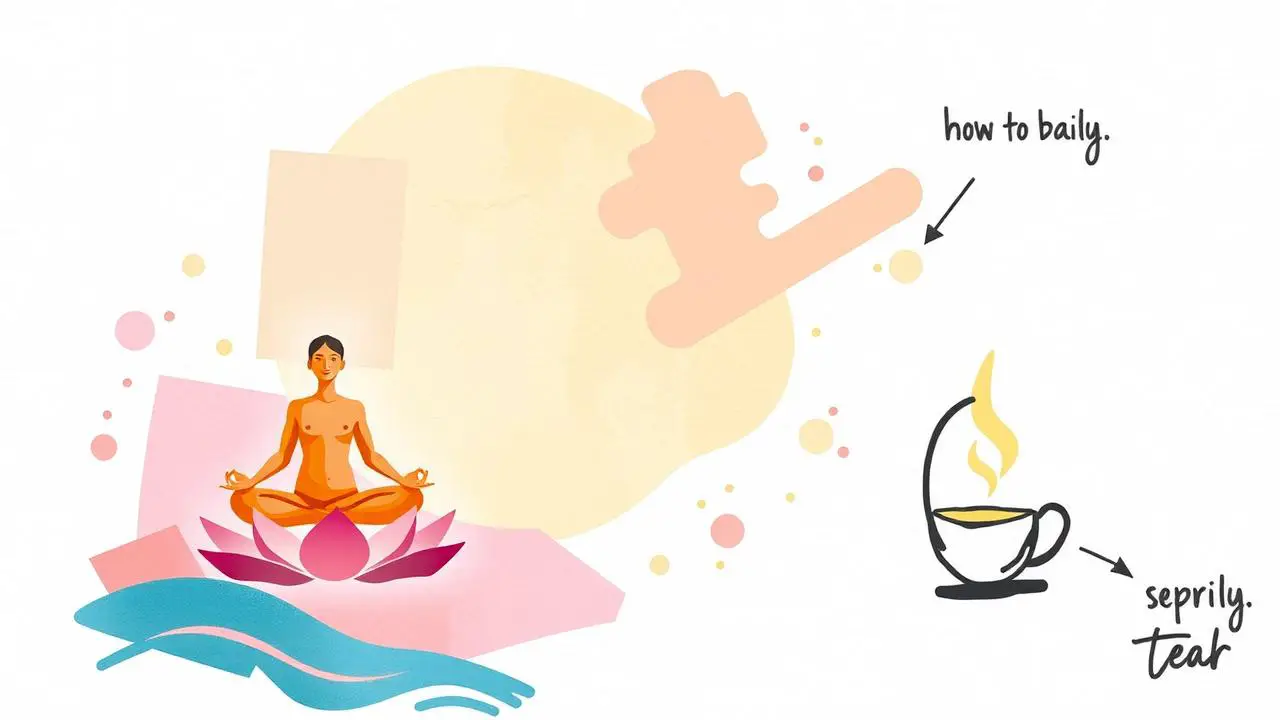Mindfulness is a practice that has been used for centuries to help people find peace and balance in their lives. How does that impact wellness?
Mindfulness can have a positive impact on physical, psychological, and social aspects of an individual’s wellness. It has been found to reduce stress, improve concentration, and increase awareness of one’s emotions and thoughts. Through mindfulness practice people can become more self-aware, less anxious and better able to cope with difficult situations in their lives.
In this article, we will explore the benefits of mindfulness for wellness and how it can help you get more out of life with zen and meditation
How can mindfulness help with relaxation and well-being?
Practising mindfulness can help improve your health and well being by increasing the connectivity between areas in the brain that have to do with attention, visual and auditory processing.
Certain parts of the brain responsible for memory, focus and empathy increase in size, while areas related to anxiety and stress shrink when engaging in this activity.
It can also help relieve mental health issues such as depression, substance abuse eating disorders couples’ conflicts anxiety disorders obsessive-compulsive disorder by helping shift your thoughts away from your usual preoccupations toward an appreciation of the moment and a larger perspective on life
What are the benefits of mindfulness for wellness?
Mindfulness is a practice that has been used for centuries to help people find peace and balance in their lives. It can have a positive impact on physical, psychological, and social aspects of an individual’s wellness. In this article, we will explore the benefits of mindfulness for wellness and how it can help you get more out of life.
1. Increased Awareness and Clarity
Mindfulness helps increase awareness and clarity by focusing the mind on the present moment, detaching from thoughts and emotions, and observing them without judgment.
This practice builds mental clarity and a greater understanding of one’s thoughts, feelings, and experiences. It also helps reduce stress levels by allowing one to become more aware of their breathing patterns while they are meditating.
2. Reduced Stress and Anxiety
Mindfulness meditation practice can help reduce stress and anxiety by helping us become more aware of our body, emotions, thoughts, and surroundings. This increased awareness allows us to better understand the source of our stressors and respond with more compassion towards ourselves. [Effect]
By incorporating mindfulness practice into our daily life, we can reduce our overall stress and anxiety levels and improve our ability to control them when they do occur.
This helps us feel more calm in any situation which can lead to a more peaceful state of mind overall.
3. Improved Mental and Physical Health
Mindfulness is a practice that involves being aware of one’s thoughts, feelings, and surroundings in the present moment.
It can help reduce anxiety by allowing people to focus on their thoughts rather than on their worries or past regrets.
Mindfulness also encourages people to take time out of their busy day to relax and breathe deeply. This can improve sleep quality and lower stress levels, which are good for your health.
By practicing mindfulness regularly, people can improve both their mental and physical health by reducing stress levels and enhancing overall wellbeing.
They also experience reduced pain due to decreased muscle tension during deep breathing exercises, as well as improved focus during meditation sessions.
4. Increased Happiness and Satisfaction
Mindfulness can help increase happiness and satisfaction by allowing us to be more present in the moment, allowing us to let go of negative thoughts and emotions that may be weighing us down.
By practicing mindfulness regularly, we can develop a deeper sense of contentment and joy in our lives.
We become less prone to stress, anxiety, depression, and other negative emotions that can affect our overall wellbeing. Additionally, mindfulness has been shown to reduce pain levels in patients with chronic pain conditions such as fibromyalgia or back pain.
5. Improved Focus and Concentration
Mindfulness meditation practice has been shown to improve focus and concentration due to the increased awareness it provides. By becoming more aware of body sensations, emotions, thoughts and other stimuli around you, you can better manage them. This allows you to stay focused on the task at hand without being distracted by unrelated thoughts or worries.
By incorporating mindfulness meditation into your daily life, you can improve your concentration by reducing stress and anxiety while increasing tolerance of uncertainty and ambiguity. This will allow for clearer thinking with fewer distractions so that you can focus on whatever task is at hand without distraction or hesitation.
6. Increased Resilience
Mindfulness increases resilience by helping us to become more aware of our thoughts and emotions, as well as the reactions we have to them. This awareness allows us to better understand how our thoughts, feelings, and reactions affect our overall well-being.
By increasing our level of mindfulness, we can gain a deeper understanding of ourselves and how certain situations or events may be affecting us in ways we may not realize. This increased awareness helps us to respond more appropriately when faced with challenges or difficult situations. It also gives us the ability to better cope with stressors in order to increase our resiliency during times of hardship or uncertainty.
7. Improved Communication and Relationships
Mindfulness can improve communication and relationships by helping us become more aware of our thoughts, emotions, and behaviors. This awareness allows us to better understand ourselves and others, leading to more meaningful relationships. Mindfulness also promotes self-expression and authenticity, which helps strengthen our connections with others.
8. Improved Self-Compassion
Mindfulness can help increase self-compassion by providing the opportunity to check in with yourself at different moments. By noticing your thoughts and feelings, you can make adjustments to your habits and behaviors.
By practicing mindfulness regularly, you will become more aware of your own needs and be better equipped to care for yourself in a loving way. This will lead to an increased sense of acceptance, understanding, and kindness towards yourself when facing challenges or difficult situations.
9. Increased Mindfulness Skills
Mindfulness can help reduce stress and anxiety, improve concentration and attention, promote awareness of body sensations, emotions and thoughts, build compassion for self and others, foster meaning and purpose and regulate emotions.
By incorporating mindfulness into your daily life, you can experience the benefits of mindfulness such as decreased stress levels, improved working memory and focus ability as well as increased mood stability.
Additionally it can help decrease rumination which is associated with unhappiness. Furthermore it allows for new pathways for expression which leads to healthier relationships with others.
10. Improved Gut Health
Practicing mindfulness can reduce the symptoms of irritable bowel syndrome (IBS) and improve the quality of life for those who suffer from it.
By calming down and becoming more aware of one’s thoughts and perceptions, the gut can also become calmer. This helps to regulate brain chemistry, influence systems associated with stress response, anxiety, and memory function in the body. Additionally, it can help to improve gut health by reducing inflammation and improving digestion.
How to get more out of life with Zen and meditation?
Mindfulness and meditation can be powerful tools to help us get more out of life. By taking the time to practice mindfulness and meditation, we can become more aware of our thoughts, feelings, and behaviors.
This increased awareness allows us to better understand ourselves and others, leading to improved communication and relationships.
With regular practice of Zen and meditation, we can gain a deeper understanding of ourselves and the world around us in order to live a more meaningful life, but how do you get started?
Step 1: Learn about the different types of mindfulness exercises
There are many types of mindfulness exercises, including:
- Mindfulness Meditation: This exercise involves focusing on one’s thoughts, feelings, and sensations. It also involves becoming aware of one’s breath and environment.
- Guided Meditation: This type of meditation uses a recording or another person to guide the practitioner through a series of instructions or reflections.
- Creative Visualization: This form of meditation uses imagery in order to create positive outcomes in one’s life or to solve problems more effectively.
- Transcendental Meditation (TM): This technique focuses on repeating a single sound or mantra while remaining calm and still for an extended period of time in order to experience deeper levels of consciousness and inner peace.
Step 2: Choose an appropriate mindfulness exercise for you
- Identify your goal: What is your reason for wanting to practice mindfulness meditation? Is it to reduce stress, increase focus, or something else?
- Research different exercises: Look online for mindfulness exercises that are tailored towards your specific goal.
- Try out a few different ones: Pick two or three exercises that seem appealing and try them out to see which one works best for you.
Step 3: Practice your mindfulness exercise regularly
- To incorporate mindfulness into your life, seek out a location, time, and method that works for you. Look for chances to be mindful throughout the day.
- Practice moment-to-moment awareness in your everyday activities by listening well to others around you, and appreciating the beauty of the world around you.
- Download a mindfulness app for your smartphone or tablet device(s) for additional help in identifying moments of mindfulness such as Jon Kabat-Zinn Meditations.
Use one of these regularly (such as daily) to reap the health benefits of Zen and meditation practices more quickly.
Step 4: Maximize your health benefits from your mindfulness exercise
Mindfulness exercises can help maximize health benefits by reducing stress, anxiety and depression, improving mood, increasing awareness of one’s senses, and lessening negative thinking and distractions.
Practicing mindfulness exercises regularly can lead to reduced stress levels, improved moods, decreased negative thinking and distraction from daydreaming or random thoughts.
It can also help people become more aware of their senses and their body’s reaction to certain foods or situations.
Step 5: Use guided imagery meditation cards to practice 10 minutes seated meditation every day
Using guided imagery meditation cards can help practice 10 minute seated meditation every day. These cards provide an easy way to get started with mindfulness practices, such as breathing exercises and visualizations.
By using guided imagery meditation cards, individuals can quickly and easily incorporate short mindfulness exercises into their daily routine.
These short sessions will help them become more aware of their thoughts and feelings, increase their focus, reduce stress levels and anxiety, improve overall wellbeing, and create positive changes in their lives.
Step 6: Work on strengthening your legs with lower-body exercises
Exercising the lower body can help with Zen and meditation by increasing blood flow, improving posture, strengthening the core muscles that support spinal alignment, and reducing stress.
Exercises such as squats, push-ups, standing shoulder presses, and skipping rope are effective for building strength and endurance in the lower body.
These exercises can help relieve stress by releasing endorphins that reduce pain levels in the body. You could also consider taking up Pilates as this will help strength and tone your entire body. Give this chair workout a try.
Finally, exercising regularly helps improve overall health, which is beneficial for achieving a state of Zen or meditation.
How to start a mindfulness practice?
Mindfulness is a powerful tool for improving overall wellbeing and reducing stress. It can be practiced in many different ways, from guided imagery meditation cards to lower-body exercises.
Step 1: Choose a mindfulness practice
- Set aside a dedicated time and place for your practice. This can be a quiet, calm area free of distractions, such as technology.
- Choose an approach that fits into your life and try one of the exercises or activities listed above or another mindfulness practice that works best for you.
- Practice mindfulness in this space by focusing on calmness and self-awareness through breathing exercises, thoughtfulness meditation, moving slowly with awareness (walking), journaling or other activities that help you get in touch with yourself physically/emotionally/spiritually (e.g., yoga).
- Set reminders for yourself to focus on being mindful during the day (e.g., when driving).
Step 2: Create a supportive environment
- Set your intention to practice mindfulness and commit to it on a regular basis.
- Find a quiet space where you can be undisturbed for the duration of your practice session.
- Sit comfortably in either a chair or on the floor with your back straight and your legs crossed if possible (or whatever is most comfortable for you).
- Close your eyes and take deep breaths, focusing on each breath as it enters and leaves your body, letting go of any thoughts that arise during this process.
- When you feel settled into this routine, start practicing mindful meditation by focusing on one particular object such as an image, sound or phrase that has meaning for you personally—this can help bring about deeper levels of relaxation during practice sessions over time..
Step 3: Find the right materials for you
To start a mindfulness practice, you should have the following materials:
- Comfortable clothing that allows you to move freely.
- A quiet space where you can focus on your breath and thoughts without distraction.
- A pillow or chair for comfort if needed.
- A journal or notebook to write down your thoughts and feelings related to the practice.
- An audio recording device if you want to listen to guided meditations or instructions on how to practice mindfulness effectively.
Also see: How to Create a Zen Meditation Room in Your Home: Ideas and Essentials
Step 4: Get started with simple practices
Some simple practices that can be started for mindfulness practice include:
- Taking time each day to sit in silence and focus on your breath.
- Practicing gratitude by recognizing the things, people, or situations that make you grateful.
- Practicing mindful listening by being present with someone else while they are speaking.
- Engaging in mindful movements like yoga or tai chi that help bring awareness to the body.
- Practice mindfulness while driving by taking deep breaths when you need it most and avoiding multitasking behind the wheel.
Step 5: Build up your knowledge and skills
- Look for moments to be mindful throughout the day.
- Focus on one task at a time instead of multitasking.
- Listen well to others and appreciate nature’s majesty through your senses.
- Download a mindfulness app for help in identifying moments of mindfulness, such as Jon Kabat-Zinn Meditations, Insight Timer, Calm and Headspace..
Step 6: Explore different styles and approaches
There are many styles and approaches for starting a mindfulness practice. Examples include:
- Mindfulness apps, such as Jon Kabat-Zinn Meditations, Insight Timer and Calm.
- Practicing moment-to-moment awareness in everyday activities such as doing chores or driving.
- Listening actively and mindfully to others in conversations or meetings.
- Appreciating the natural world around you by taking in sights, sounds and smells during walks or hikes.
The main difference between these styles is the approach each takes towards mindfulness practice. For example, apps allow users to access guided meditation sessions at their convenience from anywhere with an internet connection – making it easier than ever before to start practicing mindfulness regularly in today’s busy world.
Additionally, apps provide reminders so that users don’t forget their sessions – helpful for those who need extra motivation/reminders to stay on track with their daily practices.
Step 7: Take care of your health before starting practice
Eat a healthy diet that includes whole foods, fruits and vegetables, lean proteins and healthy fats.
Exercise regularly to maintain healthy muscles and avoid adding excess weight. If you want a home based workout try yoga or Pilates.
Monitor your emotional health by practising mindfulness techniques such as focusing on one task at a time, listening well to others, appreciating nature’s majesty and taking time out for yourself each day.
Step 8: Get guidance from a guide if needed
Research local universities and organizations that offer guided programs for mindfulness. These may include the YMCA, yoga studios, and meditation groups.
Find a resource that is convenient for you to attend and fits your budget and contact the organization or university to find out more about programs.
Once you’ve found a resource you’re comfortable with, sign up for classes or workshops on guided imagery practices so you can start your journey into mindfulness easily.
Take POSITIVE ACTION.
Step 9: Share your mindfulness practice with others
- Identify opportunities to practice mindfulness throughout the day.
- Practice moment-to-moment awareness in your everyday activities, such as doing laundry, washing dishes, driving or cooking.
- Listen well to co-workers, family members and friends and appreciate nature’s majesty by tapping into your senses with open eyes and an open mind.
- Download a mindfulness app onto your smartphone or tablet such as Jon Kabat Zinn Meditations or Calm for additional help in identifying moments of mindfulness during the day.
- Find a place, time, and approach that fits into your life and try one of these exercises or activities listed above regularly for maximum benefit.
FAQs
What type of breathing techniques are used in mindfulness?
Mindfulness can be incorporated into breathing exercises such as box breathing, alternate nostril breathing, and diaphragmatic breathing.
Box breathing involves taking slow and deep breaths in for four counts and out for four counts. Alternate nostril breathing involves inhaling through one nostril then exhaling through the other nostril in a continuous cycle.
Diaphragmatic breathing involves taking slow breaths from the stomach rather than the chest to allow oxygen to reach all parts of the body more efficiently.
What are some mindfulness activities?
Some mindfulness activities include:
- Redirecting anxious thoughts with the S.T.O.P. practice, which stands for Stop, Take a Deep Breath, Observe Thoughts without Judgment, and Proceed with New Perspective or Action.
- Practicing moment-to-moment awareness in everyday activities such as doing laundry, washing dishes, driving or cooking.
- Listening well to coworkers, family members and friends with an open mind and heart.
- Appreciating nature by taking a walk while focusing on your senses of sight, smell and sound around you..
- Using a mindfulness app such as Jon Kabat Zinn Meditations or Calm to help identify moments of mindfulness throughout the day more easily (and conveniently).




